The following questions are designed to help you with important considerations when planning your aquaponic system. Whether this is a small home operation, a commercial venture, or a school-based project, these questions will help get you started. This checklist does not cover all the planning required to build a system, but they will help with many important aspects of your project. Gathering this information is helpful for our team when assisting you. It will help ensure we are providing the best possible services to meet your project goals, objectives, and needs:
Aquaponics is a versatile growing method of symbiotically cultivating fish and plants in recirculating ecosystems that utilize natural bacterial cycles to convert fish waste to plant nutrients. It stems from combining aquaculture (raising or farming fish in tanks and other artificial environments), and hydroponics (soilless plant culture) into one integrated system. In both growing techniques, aquaculture and hydroponics, you have to treat or discard the water because of waste accumulation. However, when you combine these technologies, it forms a system where the wastewater (i.e. poopy fish water) becomes the nutrients for the plants. The new symbiotic relationship is called aquaponics.
Once an aquaponic system is set up they are quite simple to maintain. Daily maintenance is as simple as feeding fish, checking or harvesting plants, and making sure that all operating systems are a go! However, any aquaponic system revolves around your goals of growing plants and fish. Streamline Aquaponics will help identify the best production cycle and growing time frame for plants and fish based on your needs and end goals. We can help develop practical daily, weekly, and monthly checklists for managing a system, and help troubleshoot any problems that may arise. Typically, once a system is established, a production cycle will include routine tasks to ensure a healthy and productive system.
We have locations in Owen Sound and Sutton Ontario, but our services are not limited by geography. We are 100% mobile and offer our services throughout Ontario, Canada, and Internationally.
Streamline Aquaponics envisions healthy ecosystems, communities, and economies that are resilient in our changing world. Starting with the design and construction of high-quality aquaponic systems, our company strives to ensure well-being and resilience across our communities. Through research, demonstration, technology transfer, collaborative work, outreach, and our commitment to life-long learning, we aim to implement sustainable aquaponic systems capable of producing local, healthy, and affordable fish and plants using the best available technology. While staying true to our vision of providing exceptional support and services for our customers, we offer reasonable costs from start to finish. Whether prefabricated or a customized system, we will meet your needs and work within your budget.
The diverse staff at Streamline Aquaponics specialize in the design and construction of aquaponic systems. We help our customers develop sustainable methods of growing fish and plants in symbiotic environments. Although our focus and passion are the design and construction of aquaponic systems, we also offer a range of other fisheries-based and environmental services. This includes work surrounding aquaculture, ponds, aquariums, research and education, urban agriculture, and environmentally minded property management.
Whether putting together a prefabricated aquaponic system, implementing a custom design, or offering one of our many other services, we work with a variety of people. Some of our customers include private homeowners, growers, entrepreneurs, governmental and non-governmental organizations, schools, engineering consulting firms, and Indigenous communities.
Depending on the project, we work remotely or face-to-face keeping in mind current covid restrictions.
It’s true, Streamline Aquaponics is made up of a small team of two….but we are exceptionally talented! We have a diverse skillset and are passionate about everything we do. When it comes to our business, we are committed to meeting the needs of our customers. We provide high-quality, innovative services that focus on honesty, integrity, respect, and professionalism. We are accessible, client-focused, reliable and provide friendly customer service. And if it’s not in our wheelhouse, we are well connected to a range of professionals and experts relevant to what we do. This includes general contractors and skilled tradespeople, biologists, growers, fish culturists, aquaponic enthusiasts, and educators…to name a few.
A variety of fish and plants can be grown with aquaponics. Plants can include leafy greens and herbs such as lettuce or parsley, rooting crops like carrots, or fruiting plants such as tomatoes or strawberries. Ornamentals such as ferns, palms, and other flowering plants can also be grown in these systems. Similarly, a wide variety of fish can be raised with aquaponics. These can range from fish typically grown for human consumption like Tilapia species and Yellow Perch, or ornamental fish such as Koi, Guppies, or Goldfish. However, a general rule of thumb is that fish and plants should have similar needs as it relates to water quality parameters such as temperature, pH and alkalinity.
When helping establish an aquaponics system, Streamline Aquaponics will carefully plan to meet your objectives and deadlines. Our key deliverable will be a fully functioning aquaponics system that you have the knowledge to run. When implementing your project, we will ensure all deliverables meet or exceed expectations and performance as agreed upon. This includes:
Custom planning and design
Construction
System activation
Training for those operating the system
And most importantly ongoing technical support

